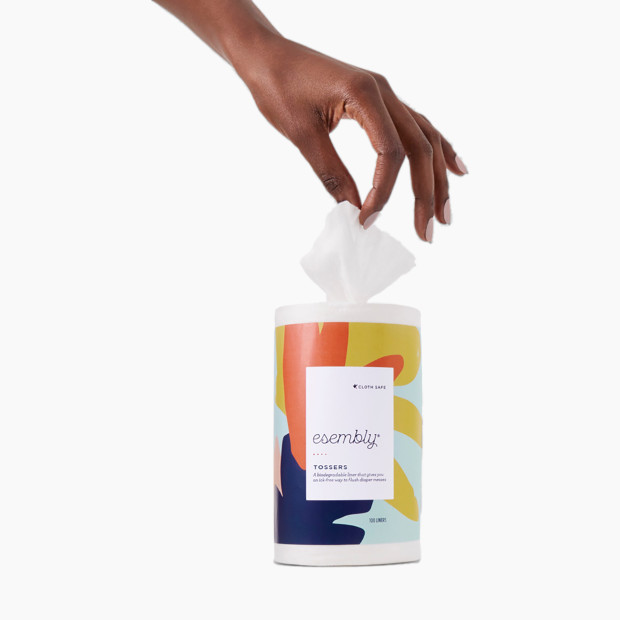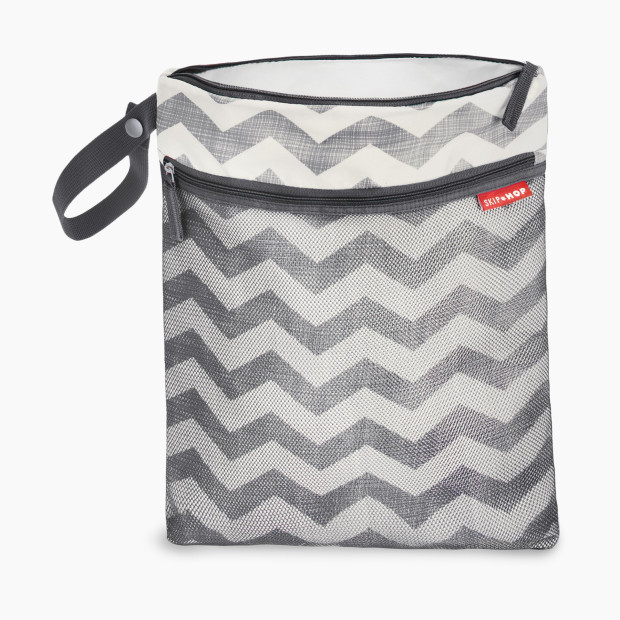
How to Wash Cloth Diapers
Skip the gross factor and get the honest facts on how to actually get cloth diapers clean.

In This Article
Usually, the number one thing that deters people from using cloth diapers is the thought of washing them. But it’s really not as bad as you might think. For those too squeamish, you can leave the mess to the pros—diaper-cleaning services pick up dirty cloth diapers and deliver clean ones to your door—but it’s definitely more cost effective to do it yourself.
Here’s a question to determine if you can handle cleaning cloth diapers: Have you ever laundered sheets, towels, socks, underwear, jeans, sweaters or any other type of clothing? If the answer is yes, then you can totally handle washing cloth diapers. Promise.
The cloth diaper brand you choose should have information about their recommended wash routine on their website. You definitely want to check that out first because not following their directions could void your warranty. But in general, you can wash cloth diapers in three simple steps:
1: Remove the Dirty Cloth Diaper
Milk-only diet: If your baby is only drinking breast milk or formula, everything in the diaper is water-soluble, so washing is super easy. “Simply toss the soiled diaper (pee and/or poo) right into the bag or pail you use to collect them,” says Liz Turrigiano, diaper laundry science expert and co-founder of Esembly. “No special pretreatment is necessary at this stage. Your washer will blast away the mess during the laundering process.”
Solid foods: Wet diapers (no poop) can go straight into the bag/pail or washer with no extra rinsing. However, “once your baby starts eating solid foods, their number twos are going to be a bit more (ahem) solid,” Turrigiano says. “So you'll want to dump the contents into the toilet before tossing the diaper in with the other used ones. Several cloth diaper brands make thin, disposable, biodegradable liners to make this task easy and ick-free.”
2: Wash a Load of Cloth Diapers You'll run two cycles:
Cycle 1: "Normal" cycle with warm water and some detergent. “This cycle will remove the visible surface soil,” Turrigiano says.
Cycle 2: Once that first cycle is complete, run a "Heavy Duty" cycle with hot water and more detergent. This is the cycle that gets the deep-down messes and odors.
Note: Skip fabric softener or laundry additives. They can cause buildup on diapers. “Be sure to use a clean-rinsing detergent, ideally one that is free of fabric softener, fragrance and optical brighteners,” Turrigiano says, “and avoid using the Sanitary or Steam setting on your washer, as these cycles simply get too hot for your diapers.”
3: Dry Cloth Diapers
Every line of cloth diapers has specific directions for drying, so be sure to pay close attention to what’s on each tag. Many must be air-dried while others can go into the dryer on medium or low settings. All-in-one types of cloth diapers take longer to air-dry, but hybrid and pocket styles air-dry quickly. Check your brand’s website for more information on drying instructions, especially before you put them in the dryer.
How Often Should You Wash Cloth Diapers?
Most parents who use cloth diapers wash a load of them every two to three days. Any longer than that and they’ll start to stink and stains could set in. So make sure you have enough clean diapers on hand to last you at least a couple days.
How Many Cloth Diapers Do I Need?
Babies can go through eight to 10 diapers a day (or more!), especially during the newborn months. Stocking up on about 24 cloth diapers seems to be the magic number for many families, but if you’re okay with washing diapers every day, you could get away with as few as 14.
Learn more about cloth diapers, including the various types to choose from, in our Cloth Diapering 101 guide.
Helpful Products for Washing Cloth Diapers
Like any chore, having the right tools and supplies can make washing cloth diapers easier. Here are some of the best ones to get the job done.
Liners
Liners look like dryer sheets and are placed on the inside of clean diapers to make cloth diaper changes easier. When your baby goes number two, simply lift the liner to catch the solids and flush the liner and waste down the toilet or put it in the trash. These are perfect for dealing with cloth diaper changes on the go.
Cloth Diaper Laundry Detergent
Some regular laundry detergents can cause buildup on cloth diapers that could impact absorbency or even lead to diaper rash. Take care of your cloth diapers with a gentle and effective detergent designed just for them. Diaper-friendly detergents are tough on stains without being irritating to your baby’s skin, and remember to choose detergents that are free of fabric softener, fragrances and optical brighteners (we’re mentioning this twice because it’s super important for the longevity of your cloth diapers).
Diaper Wet Bag
A diaper wet bag is a handy way to store dirty diapers before you wash them (and to trap the smell!). We recommend getting two wet bags—you can dump the dirty one in the wash with the diapers and have a clean one to use for changes in the meantime. You can hang the bags by your changing station or on a bathroom doorknob. They’re also super convenient to toss in your diaper bag or stroller when you’re on the go!
Waterproof Diaper Pail Liner
For extra defense against odors leaking out into the room, use a diaper pail with a lid (especially a steel one). Pails typically come with disposable liners that are essentially trash bags, but for cloth diapers, a washable, reusable diaper pail liner is an easier and more eco-friendly option. Just like with a wet bag, toss the dirty diapers into the pail with a waterproof reusable liner inside. Then when it’s full, just take the whole liner out and dump the diapers and the liner into the washer.
Diaper Sprayer
Diaper sprayers attach to the toilet and look like a small showerhead. You can use them to spray waste off a diaper and into the toilet before throwing the diaper into the wash. But be aware of how you use diaper sprayers, and keep in mind what kind of water you have. “The excess water can cause mold/mildew to grow on the diapers if not washed and dried soon after spraying,” Turrigiano says. “And for families with hard water, the high mineral content of their water being sprayed on can cause diaper stink (from build-up) and even premature degradation of the fabric (i.e. holes and tears).”
Sources: - Liz Turrigiano, diaper laundry science expert and co-founder of Esembly





